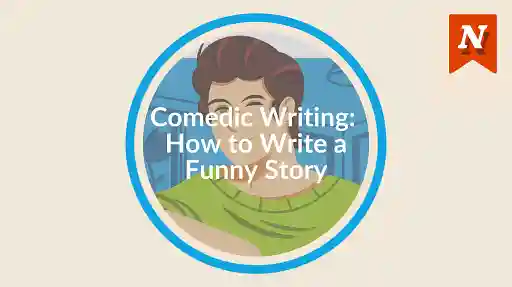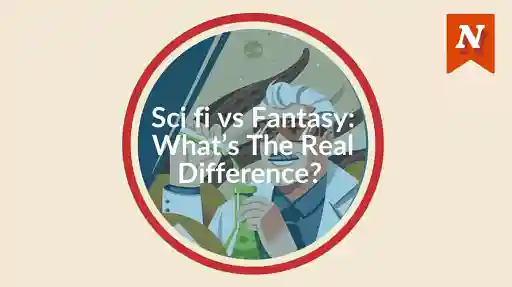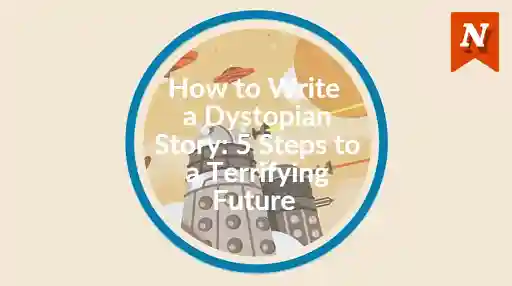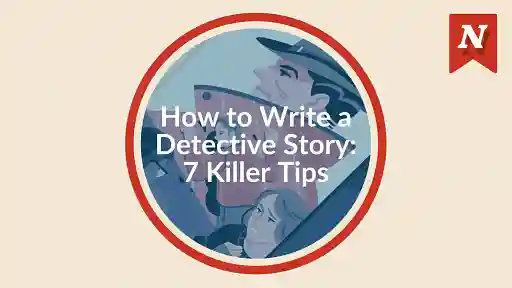Looking for the kind of story ideas romance directors dream of? You could grow your idea from a 'meet cute' scenario. Or find what drives a natural (or unlikely) duo's mutual attraction. Try these 8 simple steps to develop a memorable romantic story or arc:
Finding story ideas for romance: The steps
- Brainstorm meet cute scenarios
- Know what drives the attraction
- Imagine each player's dating history
- Plan how flaws and strengths play together
- Create a dance between desire and fear
- Plot possible obstacles
- Consider compromise
- Refine and flesh out your romance idea
Let's explore each of these tips for finding romance story ideas further:
1. Brainstorm meet cute scenarios
The first meeting between love interests in a novel, film, TV show or play is often called a 'meet cute'.
Why? Because in romance, the first meeting often happens under humorous, odd or 'cute' conditions.
For example:
- Young woman overhears a mysterious bachelor make demeaning remarks about her at a ball (Jane Austen's Pride and Prejudice).
- 21-year-old graduate offers fellow graduate a lift back to New York from Chicago and they initially get on each other's nerves (Nora Ephron's When Harry Met Sally)
- A widowed woman starts having platonic sleepovers with a widowed man she's known for years as a tonic for their mutual loneliness, though they know the town will have opinions (Kent Haruf, Our Souls at Night)
Writing 'meet cute' scenarios: Lessons from examples
Each of the above examples of a 'meet cute' tells us something interesting about what makes a good scenario for a first meeting between future lovers:
- The 'meet cute' isn't always saccharine or 'cute'. Sometimes future partners meet under sad conditions, such as coming to terms with the loneliness of bereavement. Or sometimes it's a tense first meeting (the initial dislike Lizzie Bennet feels for Mr Darcy in Pride and Prejudice). Whatever the tone and tenor, the first meeting creates or implies an interesting or even electric history. Something to build on.
- First meetings happen in unusual circumstances. A single person in a mundane routine might not enter the orbit of a future partner. In each of the above examples, 'new' or 'non-everyday' (even dangerous) choices foster a meeting. A car ride with a stranger. Attending a very public ball. A person deciding to get to know an old, casual acquaintance better.
- Tension or conflict promises a romantic arc. The situation characters meet in may be cute. Yet it often also implies future conflict. Disapproving community (Our Souls at Night). Or else an initial reason for dislike (past insults, as in Pride and Prejudice).
Brainstorm and plan your own 'meet cute'. What's cute about the situation? What could create tension? What is unusual about the place or circumstances?
2. Know what drives the attraction
Good story ideas romance directors would kill for build drama and suspense around attraction.
Why are two people attracted to each other?
We could split romantic attraction into categories such as:
- Physical attraction: What's appealing about a person's face, expressions, a nape of a neck, an arch of a brow, body, build, posture, dress
- Emotional attraction: How a person makes one feel, behave; how their qualities bring out qualities in ourselves we enjoy, how their spirit or spiritedness moves us
- Intellectual or mental attraction: How someone's mind, ideas, interests, views, values, or status appeals
Once you have a 'meet cute' scenario written down, it helps to think about what draws your characters to each other (and ways the initial source of magnetism might change or acquire new layers).
Brainstorm a list of details of what makes each character attractive to each other. Try to think of at least 5 attributes from any of the three categories above.
In Kent Haruf's Our Souls at Night there are initial attractions independent of the other person. Each character's desire to ease their own loneliness, for example.
As your characters become more intertwined what are the small details they come to adore, physically, emotionally, intellectually?
3. Imagine each player's dating history
'Baggage' is a terrible word. Yet it's also true that as memory-keeping actors, people carry their past relationships around with them. The delights and the disappointments. Different people carry their pasts in their own curious ways.
Examining story ideas, romance is full of characters who flee one love catastrophe to find safe harbour somewhere (or the reverse).
In Tolstoy's Anna Karenina, Anna has an affair with Count Alexei Vronsky who is infatuated with her on sight and presents an impassioned change from her husband Alexei Karenin who is 20 years her senior and more dispassionate.
In the case of Anna K, we see a history - Anna'a marriage and it's duller, more stifling aspects - and this gives context for her affair.
A character who has never dated anyone before will have a very different field of reference to one who has 'played the field'.
Brainstorm and imagine past loves your main characters had, to flesh our romance story ideas. Ask:
- Why did their last relationship not work out?
- What's the greatest lesson they've learned from a past relationship?
- What are they afraid of due to past dating experiences?
This detail might not make it into your story. Yet it will help you understand your characters' romantic history and thus their motivating memories.

4. Plan how flaws and strengths play together
Story ideas romance turns to again and again include:
- The Odd Couple: An unlikely romanic duo (for example Harold and Maude)
- The Doomed Lovers: Characters are passionate about each other but fate gets in the way (for example, Romeo & Juliet)
- The Initial Enemies: There is initial mild to intense dislike between eventual love interests (for example, Lizzie Bennet and Mr Darcy)
Part of why these romantic scenarios work time and again is they provide immediate sources of engaging suspense and conflict.
For example, the 1973 film Harold and Maude written by Colin Higgins is about a 20-year-old obsessed with death (the titular Harold) and the romance that develops between him and a 79-year-old woman (Maude).
There is every ingredient of an 'odd couple' story. What makes the story work is how each character's strengths and flaws combine. Harold is morbid and melancholic, yet Maude has a zest for life and lives with wild anarchy, stealing cars and parking wherever she wants.
Through their getting to know each other, Harold prepares Maude for letting go, in one way, while she teaches him how to live his life with more abandon.
Brainstorm each romantic lead's greatest strengths and then their flaws. Look at both side by side. What is common ground? What could be a source of interesting conflicts?
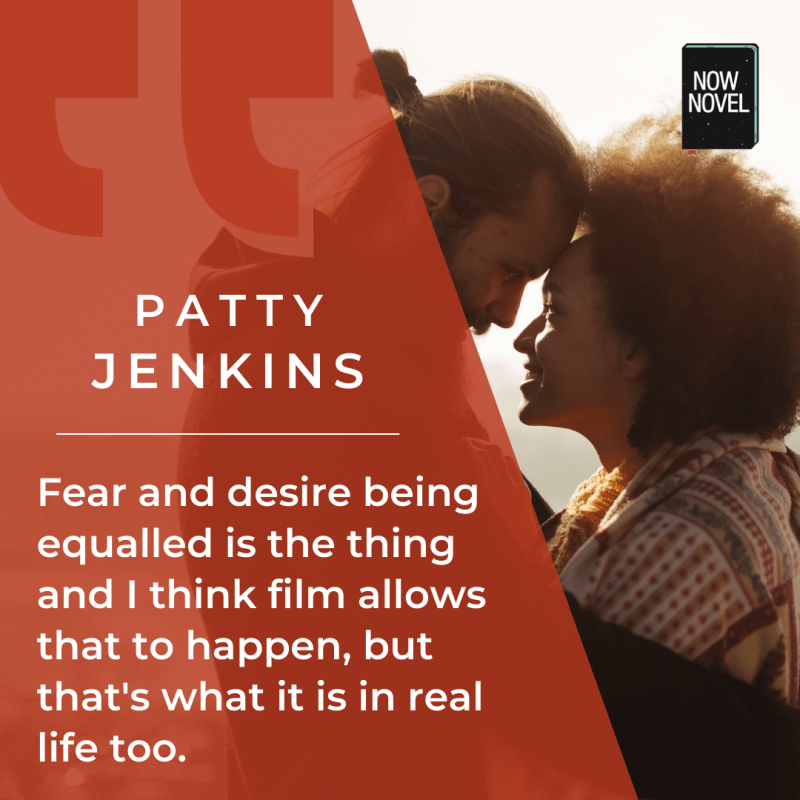
5. Create a dance between desire and fear
What makes a love story great?
One reason people love to read (and write) romance is the comfort of happy endings.
One writer in the New York Times says of romance (and the romantic comedy or rom-com genre in particular):
Romantic comedy is the only genre committed to letting relatively ordinary people — no capes, no spaceships, no infinite sequels — figure out how to deal meaningfully with another human being.
Wesley Morris, 'Rom-Coms were Corny and Retrograde: Why do I Miss them So Much?'
A large part of this figuring out - what makes romance tick - is the push and pull between two emotions: desire and fear.
On the one hand, Lizzie Bennet fears the elusive and insulting Mr Darcy and his inscrutable manner.
On the other, she desires to learn more, especially when Darcy takes an interest in protecting Lizzie's sister and her honour.
In a director's roundtable, the director of 2017's Wonder Woman movie, Patty Jenkins talks about 'the pocket of emotion'. She describes this as being part of what makes the great black and white romance movies of yesteryear so good. She continues to define what it is:
Patty Jenkins: It's almost the electricity of what love is to me, when fear is mixed with desire… these two people are just sitting there and then you realize they're meant to be together.
Full Directors' Roundtable, 2018, interview on YouTube.
Interviewer: Is love in real life ever what it is in films?
Patty Jenkins: I think so… Fear and desire being equalled is the thing and I think film allows that to happen, but that's what it is in real life too, although we always want to shut it down. Your desire is always to get the upper hand, as soon as you do - not so much love anymore. Film allows people to feel comfortable extending it [desire and fear in balance] longer.
6. Plot possible obstacles
Story ideas for romance are easy to expand once you have a scenario, plus characters' backstories, strengths, flaws, attractions and fears.
Out of all this, you can find possible obstacles. What threatens to tip the balance from desire to fear? What makes Cinderella run from the ball?
Common obstacles that go with romance story ideas include:
- Shaky trust
- Physical separation (by misfortune such as natural disaster or necessity)
- Internal conflict (for example, if one romantic lead is conflicted in choosing between two potential mates)
- Interference (for example, if a third party turns one lover against the other)
- Competing desires or duties (for example, Cinderella having to leave before her magical dress and transport reveal their inauthenticity
Create a timeline of potential obstacles for your romantic leads. Vary their intensity for rise and fall, light and shade.
7. Consider compromise
Story ideas romance authors lean into often revolve around a central impasse. A final roadblock characters will need to compromise or dig deep to overcome.
Looking to real life, headlines have been full of Prince Harry and Meghan Markle's relocation to the USA, after both grew tired with being hounded by the press in the prince's native England. In doing so, he claimed to have been cut off financially by his family.
What sacrifices might your romantic leads face over the course of their relationship? Will there come a time of choosing between status and privacy, for example, duty and domestic or public freedom?
Even the world's wealthiest or most powerful are seldom able to have it all.
8. Refine and flesh out your romance idea
Once you've brainstormed and made notes about the above seven steps, it's time to revist your core romance story idea.
Rewrite your romance idea as two sentences, then a paragraph, and then a page. This process is part of the story outlining process in the Now Novel dashboard. It's a helpful way to take what was compact and imagine extra detail so you're ready to write.
Start brainstorming great romance ideas now and get helpful feedback from a community of writers as you go.


